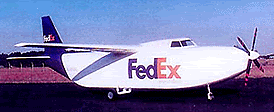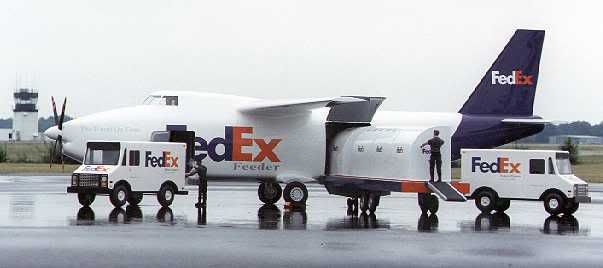What airplane is next? Is it going to be the CRJ/ERJ?
Mmmmm, I doubt it. For the payload vs. fuel burn vs. what is already done with tp's I don't think theres a market for it.
Apparently there is a market. Although this article is dated 08/08/06:
http://www.flightglobal.com/article...unches-cargo-crj-as-cascade-aims-for-kit.html
West Air launches cargo CRJ as Cascade aims for kit deal
By Darren Shannon in Washington DC & David Kaminski-Morrow in London
Bombardier closes on conversion contract for freighter variant of 50-seater
Bombardier is in talks with British Colombia-based Cascade Aerospace to design, certificate and build the CRJ200 cargo conversion kit for the package freighter (PF) programme that Swedish freight operator West
Air Europe launched last week.
Gothenburg-based West Air Europe is acquiring two ex-Lufthansa CRJ200s for conversion to PF configuration. The cargo airline, which has an all-turboprop fleet of 17 ATR 72s, BAe ATPs and HS748s, is expected to introduce its first CRJ200 PF in April. West Air plans to add its first jet, an ex-Ansett
BAe 146, in October this year.
"We require the Bombardier CRJ200 PF to fulfil specific customer demands for higher than turboprop speeds on routes of more than 500nm [925km]," says West Air Europe president Gustaf Thureborn.
Negotiations between Bombardier and Cascade on developing the conversion kit continue, but are at an advanced stage, says a source close to the talks.
The kit, which will be sold exclusively by Bombardier, includes the stripping out of all passenger elements of the cabin, the installation of protective flooring, fuselage liners, ceiling panels and fire and smoke suppressants, as well as some minor structural modifications, says the source.
Parcels will be loaded through the existing forward passenger door. In the all-cargo configuration, the CRJ200 PF will have a cargo volume of roughly 48.2m3 (1,700ft3) and a payload of 6,350kg.
At 24,000kg, maximum take-off weight will be the same as the high-gross-weight version of the CRJ200. Cascade will have to obtain supplemental type certificate for its kit.
The conversion of a CRJ200 is understood to take 30 days and the unit list price is estimated to be around $500,000. Bombardier believes that there could be demand for up 50 PF conversions for its 50-seat jet.
"Since the introduction of the concept, considerable interest has been expressed by many prospective customers," says Rod Sheridan, Bombardier Regional Aircraft vice president Asset Management.
Meanwhile, West Air is also expanding its ATP fleet with several more examples of the turbo­prop, including three aircraft acquired from Danish regional carrier Sun-Air.
Here's a newer article, but I can't find a date on it:
http://www.aircargoworld.com/regions/northam_0307.htm
Rethinking Regional
Bombardier Aerospace thinks speed and short-haul cargo can combine for a regional jet freighter niche
Robert W. Moorman
ombardier Aerospace may have found another use for its no-longer-produced CRJ-200 regional jet as a small freighter. But much of the air cargo industry is uttering the same line given by regional airlines in the late 1980s when the CRJ passenger airliner first appeared: The aircraft can't compete economically with a comparably sized turboprop.
The industry was wrong then and could be wrong now.
The Canadian plane-maker this spring will deliver two CRJ-200 Package Freighters to West Air Sweden, which plan to use the aircraft on behalf of various Scandinavian postal authorities, integrators and logistics providers. The West Air experiment could have a significant impact on the air cargo industry if the airline, which also flies ATP freighters, makes money with the swift jet. Several airlines are anxiously awaiting news of the success or failure of the CRJ freighter.
Bombardier could use some good news. In recent years, it's been eclipsed by rival Embraer, which has moved beyond RJs into manufacturing of 70- to 100-seat plus airliners. The upper end of this market, however, remains illusive to Bombardier, which once again delayed plans to proceed with the $2 billion development of a 110-to 130-seat narrowbody jet, the so-called C Series.
It sees strong potential, however, in the freighter market.
"The CRJ has the same benefit as a package freighter as it did when introduced as a 50-passenger airliner - speed," says Frank Baistrocchi, director of sales in Bombardier Aerospace's asset management group. "It's not a replacement for a turboprop, but an expansion vehicle. With this aircraft, "you will be able to introduce new freighter markets, reach out further."
Cost Rules
RJs were a very successful instrument in testing new passenger markets for larger regional and major passenger airlines, and Bombardier is hoping to repeat this formula in cargo with the CRJ-200PF. Bombardier has manufactured 1,021 CRJ100s/200s since the first CRJ was delivered to Lufthansa CityLine in October 1992.
Bombardier claims the CRJ-200PF will offer operators a quick and cost-effective connection on point-to-point routes of between two and three hours. With a 10,000-pound payload, the plane can travel just beyond 2,000 nautical miles. Range with a maximum payload of 14,000 pounds is 839 nautical miles.
Early estimates show the package freighter market will need between 25 and 50 aircraft over the next five years, depending on initial interest.
The conventional view is that the short-haul market is being taken over by trucks in North America and Europe but Bombardier believes trucks can't compete with the RJ's range on long, thin markets. The major obstacles remain the high cost of jet fuel plus the relatively stable residual value of the CRJ.
The planes produced between 1992 and 2001 range in value between $6.1 million and $9.4 million, says Gueric Dechavanne, director of asset management for BACK Aviation Solutions, a sister company of Air Cargo World. For the longest-range editions, the price can reach $10.4 million.
At those prices, the only way for the CRJ-200 package freighter to succeed is as a hauler of premium air freight, say industry observers.
"Clearly, this aircraft is not a winner on a cost basis, but there are some niches for the CRJ," said George Hamlin, an airline analyst.
"The idea will be to get this aircraft into an express carrier application," said Robert Dahl, project director for the Air Cargo Management Group.
Total aircraft operating costs for the passenger CRJ-200 are around $1,800 per block hour, with fuel accounting for about 40 percent, said BACK.
Despite sticker shock, other manufacturers are revisiting the RJ freighter concept.
In late January, BAE Systems Regional Aircraft announced the re-launch of its four-engine BAe-146 Quiet Trader freighter conversion program. BAE will team with a conversion house in Romania.
RJ Partner
To convert the CRJs to freighter, Bombardier selected Cascade Aerospace of Abbotsford, British Columbia, which will build and certify the conversion kits for the CRJ-200 freighters.
To maximize capacity, all non-essential systems and items have been removed from the CRJ200PFs. The passenger-to-freighter conversion of the CRJ200 is modest by most standards. The modification is restricted to the cabin, with protective covering and minor reinforcements to the forward and aft sections of the cabin. The fuselage will be gutted and a flexible liner system added. The freighter will use the existing portside door; there are no plans to design a larger cargo door. Both aircraft will undergo function testing before delivery this spring.
"We don't see this modification as being so complex that it couldn't be done by a reputable MRO," said Greg Thorne, Cascade's chief engineer.
Thorne said two European regional airlines with MRO capabilities have inquired about the conversion kit. Although Europe remains the primary target market, all-cargo carriers in India, Mexico and Australia have shown interest.







